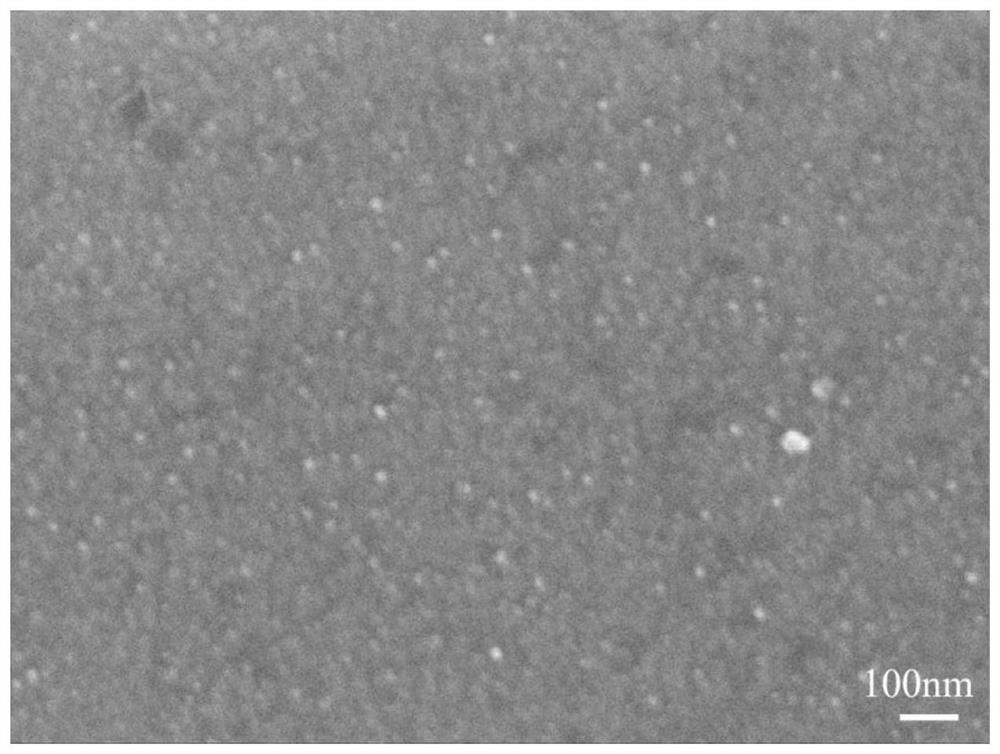GH2132 high-temperature alloy based on component collaborative change relation and preparation method
A GH2132, changing relationship technology, applied in the field of superalloys, can solve the problems of large changes in alloy properties, inability to accurately guarantee comprehensive properties, inaccurate element ranges, etc., to achieve a simple and effective preparation process, overcome compositional uncertainty, and improve preparation The effect of craftsmanship
- Summary
- Abstract
- Description
- Claims
- Application Information
AI Technical Summary
Problems solved by technology
Method used
Image
Examples
Embodiment 1
[0024] Embodiment 1: the mass percent of alloy is:
[0025] Fe-23.51Ni-1.36Mn-14.30Cr-1.19Mo-0.32V-0.17Si-2.09Ti-0.17Al-0.05C (wt.%).
[0026] Step 1: Alloy Preparation
[0027] High-purity metal materials are used, and ingredients are prepared according to mass percentage. The ingredients are smelted at least four times in a vacuum non-consumable arc melting furnace under the protection of an argon atmosphere to obtain an alloy ingot with a uniform composition and a mass of about 120 g, and the mass loss during the smelting process does not exceed 0.1%. The alloy ingot was homogenized by a muffle furnace, the homogenization temperature was 1200°C, and the treatment time was 24h. Subsequent multi-pass cold rolling was carried out to obtain plate samples of 1.5-2.0 mm. Afterwards, solid solution treatment at 1080° C. for 2 hours, water cooling to room temperature, heat preservation at 720° C. for 16 hours, and water cooling to room temperature can obtain the aging state allo...
Embodiment 2
[0030] Embodiment 2: the mass percent of alloy is:
[0031] Fe-27.06Ni-1.03Mn-14.30Cr-1.19Mo-0.32V-0.17Si-2.09Ti-0.17Al-0.05C-0.003S-0.003P (wt.%).
[0032] Step 1: Alloy Preparation
[0033] High-purity metal materials are used, and ingredients are prepared according to mass percentage. The ingredients are smelted at least four times in a vacuum non-consumable arc melting furnace under the protection of an argon atmosphere to obtain an alloy ingot with a uniform composition and a mass of about 120 g, and the mass loss during the smelting process does not exceed 0.1%. The alloy ingot was homogenized by a muffle furnace, the homogenization temperature was 1200°C, and the treatment time was 24h. Subsequent multi-pass cold rolling was carried out to obtain plate samples of 1.5-2.0 mm. Afterwards, solid solution treatment at 1080° C. for 2 hours, water cooling to room temperature, heat preservation at 720° C. for 16 hours, and water cooling to room temperature can obtain the ag...
Embodiment 3
[0036] Embodiment 3: the mass percent of alloy is:
[0037] Fe-23.51Ni-1.36Mn-16.10Cr-1.19Mo-0.32V-2.09Ti-0.34Al-0.05C-0.003P-0.003B (wt.%).
[0038] Step 1: Alloy Preparation
[0039] High-purity metal materials are used, and ingredients are prepared according to mass percentage. The ingredients are smelted at least four times in a vacuum non-consumable arc melting furnace under the protection of an argon atmosphere to obtain an alloy ingot with a uniform composition and a mass of about 120 g, and the mass loss during the smelting process does not exceed 0.1%. The alloy ingot was homogenized by a muffle furnace, the homogenization temperature was 1200°C, and the treatment time was 24h. Subsequent multi-pass cold rolling was carried out to obtain plate samples of 1.5-2.0 mm. Afterwards, solid solution treatment at 1070°C for 2 hours, water cooling to room temperature, heat preservation at 710°C for 16 hours, and water cooling to room temperature can obtain the aging state a...
PUM
| Property | Measurement | Unit |
|---|---|---|
| tensile strength | aaaaa | aaaaa |
| yield strength | aaaaa | aaaaa |
| hardness | aaaaa | aaaaa |
Abstract
Description
Claims
Application Information
 Login to view more
Login to view more - R&D Engineer
- R&D Manager
- IP Professional
- Industry Leading Data Capabilities
- Powerful AI technology
- Patent DNA Extraction
Browse by: Latest US Patents, China's latest patents, Technical Efficacy Thesaurus, Application Domain, Technology Topic.
© 2024 PatSnap. All rights reserved.Legal|Privacy policy|Modern Slavery Act Transparency Statement|Sitemap


